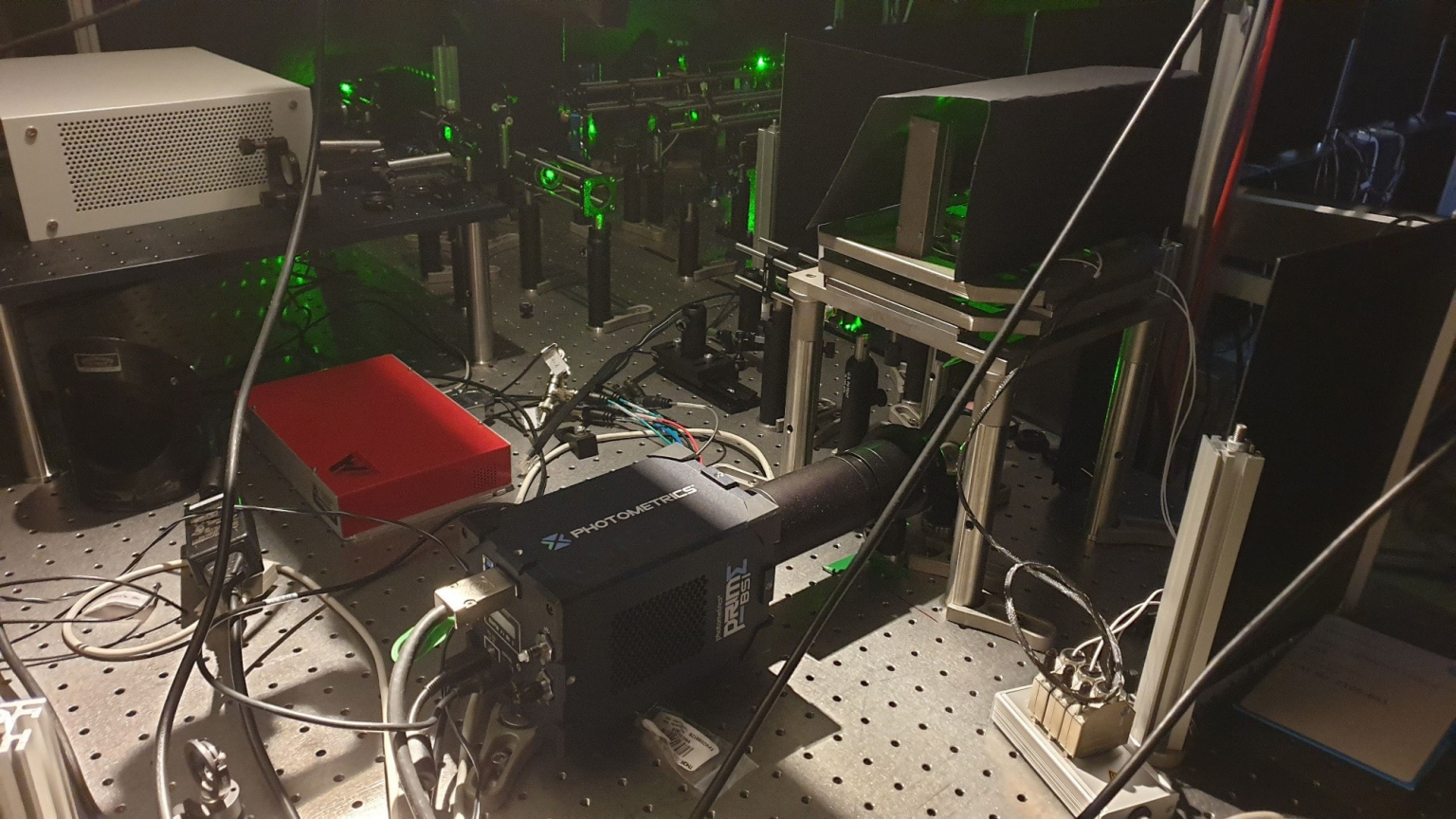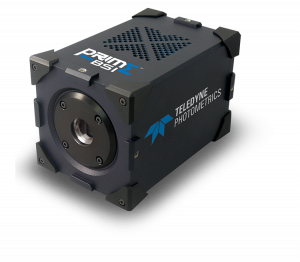Single Molecule Localisation Microscopy
Prof. Rainer Heintzmann and Alexander Jügler
Biological Nanoimaging, Leibniz Institute of Photonic Technology (Leibniz-IPHT)
Background
Senior Ph.D. student Alexander Jügler works in the Heintzmann Lab, which studies super-resolution imaging applications such as single-molecule localization microscopy (SMLM), and works on improving the phototoxicity and resolution of such techniques while making them easier to work with.
As Mr. Jügler mentioned, "In my imaging, I create local minima and shift them by a few nanometers using a spatial light modulator. We are able to detect the nanometer shift but to evaluate the local minima quality we need to find stable and bright fluorescent particles a few nanometer in size. The 110 nm microbeads we are using right now are way too big.
"Later we will use all kinds of biological samples with the intent to develop a system that is able to analyze toxic fungi, which create pores a few nanometres in size."

Figure 1: An image of the Prime BSI CMOS on an optical bench, set up for single molecule localisation microscopy in the lab of Prof. Rainer Heintzmann.
Challenge
When performing super-resolution imaging, especially for SMLM, it is vital to have a high signal-to-noise ratio in order to best detect these particles. This requires both maximizing the signal collection with a high quantum efficiency and balanced pixel size, as well as minimizing the noise level with low read noise.
In addition, Mr. Jügler stated, "A big field of view to track the particles is also needed, a big advantage of our technique is that we have to track across a big FOV." As the imaging system and technique can make use of a large FOV, it would be best paired with a camera that also features a large sensor size.
We needed the best possible quantum efficiency available at a high speed, and with a big field of view, this is why we decided on the Prime BSI.
Prof. Rainer Heintzmann
Solution
The Prime BSI has a remarkable signal-to-noise ratio due to the near-perfect 95% quantum efficiency and the extremely low read noise, all while running at a high speed with a large sCMOS field of view. This makes the Prime BSI a great solution to SMLM imaging.
As outlined by Mr. Jügler, "I am working in this super-resolution field and trying to implement these techniques, which is why I need very good cameras with high quantum efficiency, and are very fast and do a good job at high speed. In our lab, we have a number of cameras available and I have decided on the Prime BSI because it has these characteristics."
"My overall statement is that the [Prime BSI] is very good for my experiments. For me the experience of the camera and the quantum efficiency was great. Many students want to have a camera and I was lucky to get it! It's one of the best cameras in our lab right now."
The Prime BSI is running in MATLAB in the Heintzmann lab and Mr. Jügler mentioned how easy it was to implement the Prime BSI in the system with this software.

Learn More About The Prime BSI